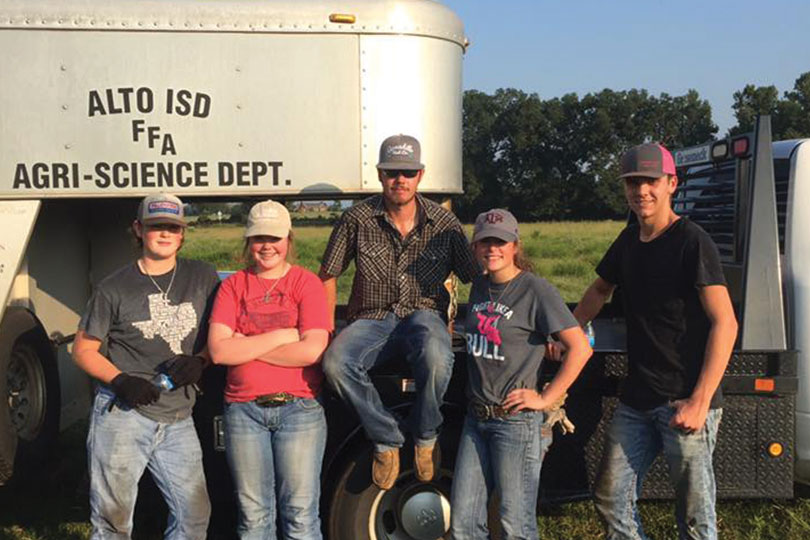By Jessica Domel
Multimedia Reporter
Most of them have never met. Some never will. But that didn’t stop a group of Cherokee County farmers, ranchers and students from doing all they could to help their fellow Texans flooded by Hurricane Harvey.
It started with a Facebook post.
Texas Farm Bureau Field Representative Jodie Goff was headed south with feed and supplies for those in need.
“I noticed a little bit of hay that she had on her trailer, and I just texted her and said, ‘Ma’am, is there anything else they could use that we could help with?’” Cherokee County Farm Bureau President John Griffith said.
As it turns out, there was. Students in Kountze and Buna needed square bales of hay to feed their livestock.
“Being an ag teacher myself, I said, ‘I really want to try to make an effort to see what we can do, not only from the Farm Bureau standpoint, but also that I could utilize my FFA kiddos to help out,” Griffith, an agricultural science teacher and FFA advisor in the Alto Independent School District, said.
Griffith, who has cattle of his own, had about 200 bales left from last year. So, he talked to his FFA officers and his school principal and set up a game plan.
They would use the school’s truck and trailer to transport the hay. And they’d use social media, including the Cherokee County Farm Bureau’s Facebook page, to gather donations.
With a full trailer, they traveled to Buna on Labor Day.
“There was a good friend of mine that was the ag teacher at Orangefield. He had secured a load that had been brought in previously. He came up to me and was very emotional,” Griffith said. “He hugged me and just could not express how thankful they were by willing to help out.”
The group was able to unload about 225 bales of the 330 they had brought to the ag barn.
“They were down to five bales before we started unloading,” Griffith said.
They unloaded 100 bales onto a flatbed trailer that was ready to immediately disperse the hay, because there was such a great need.
Back home in Alto, the donations didn’t stop. The community offered up its round and square bales freely.
Then, one of the ag teachers from Buna called Griffith.
“Wednesday night of that week, they had pretty much depleted their resources,” Griffith said.
Griffith changed his plans. He hopped on a tractor and began to bale one of his meadows. They loaded it on the truck and hauled them back to Buna.
“They were our primary focus, not to neglect anybody, but their need was with some of their FFA members who had personal animal projects. Then, some of the adjoining schools had the same situation,” Griffith said.
At the time, the square bales of hay were needed because the only way to reach some cattle to feed them was by boat.
Floodwaters have since receded and livestock owners are once again able to use the donated larger round bales.
Either way, Griffith said, they stepped in because they saw a real need within the FFA family.
“It’s heartwarming to be able to contribute and help, and by the same token, know that within a moment’s notice, that if they were able, they would do the same thing for us,” Griffith said. “It’s a giving opportunity, but it also might be that we’re in that situation next time, and they would be willing to step up and help as need would arise also.”
Griffith and his students still have hay promised as donations. But because space is an issue in the Buna ag barn, they’re taking it down when needed.
“It’s going to be a long term process,” Griffith said. “A lot of the hay supplies were saturated with water, which they’re not going to able to use in the winter months. There’s going to be a demand if the producers can’t get a last cutting due to flooded fields.”

